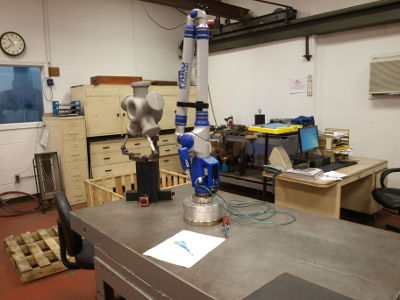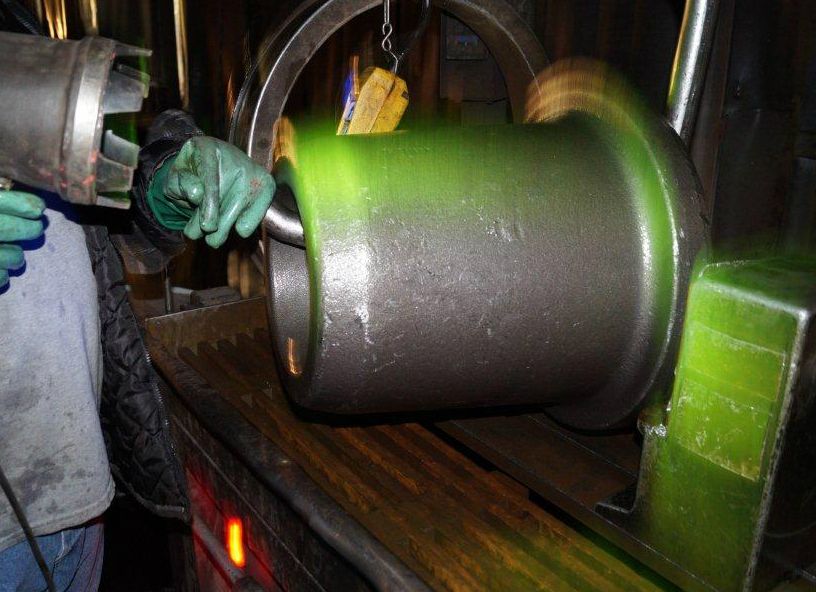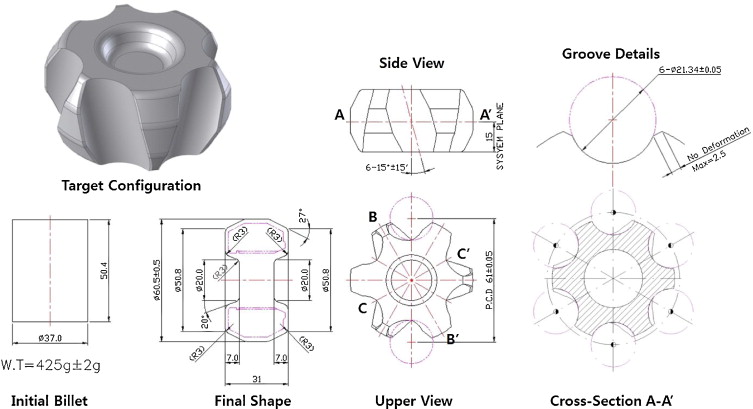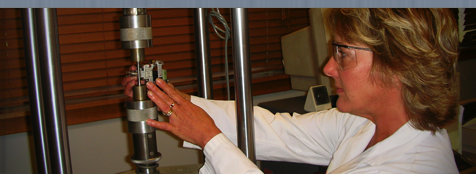Our Comprehensive Forging Inspection Methods
At Canton Drop Forge, ensuring the integrity of forged components is a priority. Our company implements a variety of forging inspection methods, each designed to identify different types of flaws, including:
- Ultrasonic testing
- Metallographic analysis
- Fluorescent & Magnetic particle inspection
- Laser scanning
- Visual inspection
Together, our non destructive testing methods create a thorough and reliable testing process for our customers. When we set up a project with you, we will go over all of the steps we will take to ensure you get the highest quality forged components possible.
If you have any questions about our inspection methods, feel free to contact us.

Laser Scan
Canton Drop Forge utilizes state-of-the-art laser scanning technology with an accuracy of .002 of an inch to measure and compare parts to the surface model. The laser precision allows for rapid and accurate inspection of forged parts, ensuring quality and reducing lead times by half. This process is integral to our comprehensive forging inspection and testing protocols, ensuring the highest drop forging quality assurance.
Fluorescent & Magnetic Particle Inspection
The non destructive testing method of fluorescent magnetic particle inspection detects surface and subsurface discontinuities such as cracks, laps, and seams. During this process, fluorescent magnetic particles are applied to detect surface cracks under UV light. Magnetic particle inspection is a crucial component of our forging inspection methods, helping to ensure that every forging meets our rigorous QA standards.


Visual Inspection
Our expert team conducts a thorough visual inspection of all forgings. This essential step in forging inspection and testing identifies surface imperfections, verifying that each component adheres to our strict forge QA standards.

Ultrasonic Testing
Using high-frequency sound waves, ultrasonic testing of forgings allows us to detect internal flaws invisible to the naked eye. This non destructive testing method ensures the structural integrity and reliability of every part we forge.
Metallographic Analysis
Canton Drop Forge utilizes state-of-the-art laser scanning technology with an accuracy of .002 of an inch to measure and compare parts to the surface model. The laser precision allows for rapid and accurate inspection of forged parts, ensuring quality and reducing lead times by half. This process is integral to our comprehensive forging inspection and testing protocols, ensuring the highest drop forging quality assurance.

FAQs About Forging Inspection and Testing
We have compiled a list of common questions we get about our forging inspection and testing methods. If you have a question that is not answered here, we will make sure to answer it when setting up your project, or you can contact us for more information.
Why is forging testing important?
Forging testing and inspection is crucial because it ensures the reliability and durability of forged components. Forging inspection methods are able to verify that the forged components are free from defects and meet the required specifications for strength, durability, and performance. By detecting flaws early, we can prevent potential failures in the final product, especially in critical applications where failure is not an option.
What methods are used in forging inspection?
At Canton Drop Forge, we use various forging inspection methods, including ultrasonic testing, magnetic particle inspection, and laser scanning, to ensure comprehensive quality control. These methods assess both the surface and internal integrity of a forged part.
Which defects can be detected during forging inspection?
During forging inspection and testing, defects such as cracks, voids, and inclusions can be detected. These flaws, if left unchecked, can lead to failure in the final application. Our forging inspection processes adhere to industry standards to ensure that every component is of the highest quality, and ready for use in critical applications.
Trusted Forging Testing & Inspection at Canton Drop Forge
At Canton Drop Forge, we understand the importance of precision and reliability in every forging we produce. Quality and safety are non-negotiable in the industries we serve, which is why we prioritize thorough forging inspection and testing in every project. Our rigorous drop forging quality assurance processes guarantee that every product meets the highest industry standards. If you have any questions or would like to learn more about our capabilities, please don’t hesitate to contact us. Our team is ready to provide the expertise and support you need.
